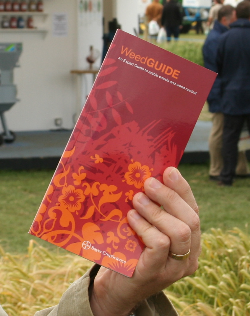
Has the time come for arable farmers to focus on weed management, rather than weed control? And are herbicides the only option? These tough questions, and more, are posed by Bayer CropScience in the foreword to the latest edition of the 'Weed Guide', first published more than 30 years ago.
While acknowledging that weeds cause real problems for arable farmers, including lost yield, reduced quality, and harvesting difficulties, as well as harbouring pests and diseases, Bayer also suggests that a mood swing is in the offing.
"Herbicide science has changed markedly in the 30 years since the first weed guide was published," says Nick Duncan, Bayer's herbicide product manager and editor of the new guide. "Back then, to be effective, active ingredients required application at relatively high rates.
"Today's low dose, highly selective, products have changed the way we view herbicides," he notes. "We're in a position now where growers can design weed management programmes to remove the most pernicious or problematic weeds.
Particularly exciting, Mr Duncan says, is the ongoing research and assessment of non-chemical options. "Cultivations, crop rotations, delayed drilling and competitive crops are all either in use, or under active consideration," he points out. "The combined use of cultural and chemical control should help to deliver long term weed control."
The fact remains, however, that in order to develop such programmes, one must know the target. The weed guide has been designed to enable the accurate identification of the majority of grass and broad-leaved weeds growing in the British Isles today – 26 grass-weeds and 49 broad-leaved species.
"The species list is particularly illustrative of the change in farming over those 30 years," says Mr Duncan. "Bromes didn't feature at all in the first guide, yet this year there are five species in the guide – hardly surprising when agronomists voted it their most problematic weed in a poll earlier this year."
As well as a revised, easier-to-read format, the new content also includes pointers on managing weed resistance; weeds and wildlife; and soils – hot issues for the 21st century arable farmer faced with cross-compliance requirements.
